Nemanja Todorović, Marko Vasiljević, Jog Raj, Hunor Farkaš, and Zdenka Jakovčević
PATENT CO,. Mišićevo, Serbia
Fumonisins are a significant health risk to livestock and potentially also to humans
Fumonisins are naturally occurring toxins produced by several species of Fusarium fungi (molds), with Fusarium moniliforme recognized as the largest producer of this mycotoxin. Other species such as F. proliferatum, F. nygamai, F. anthophilum, F. dlamini and F. napiforme are also producers. Only Fumonisin B1 (FB1), B2 (FB2) and B3 (FB3) are toxicologically significant whereas the most predominant FB1 corresponds to 70% of fumonisins. In comparison to other mycotoxins, fumonisins are highly soluble and have greater capacity to spread easily and contaminate high volume of water and feedstus. FB1 is classified as a potential human carcinogen (class 2B) by International Agency for Research on Cancer (IARC) and has been linked to acute toxicity in farm animals (horses and swine), including hepatotoxicity and nephrotoxicity.![]() THERE ARE 6 TYPES OF FUMONISINS: B1, B2, B3, B4, A1 and A2
THERE ARE 6 TYPES OF FUMONISINS: B1, B2, B3, B4, A1 and A2

Raw materials affected
FB1 and FB2 can be found as a natural contaminant in cereals, specially corn and wheat, usually in concentrations that generally induce subclinical intoxications in different species.
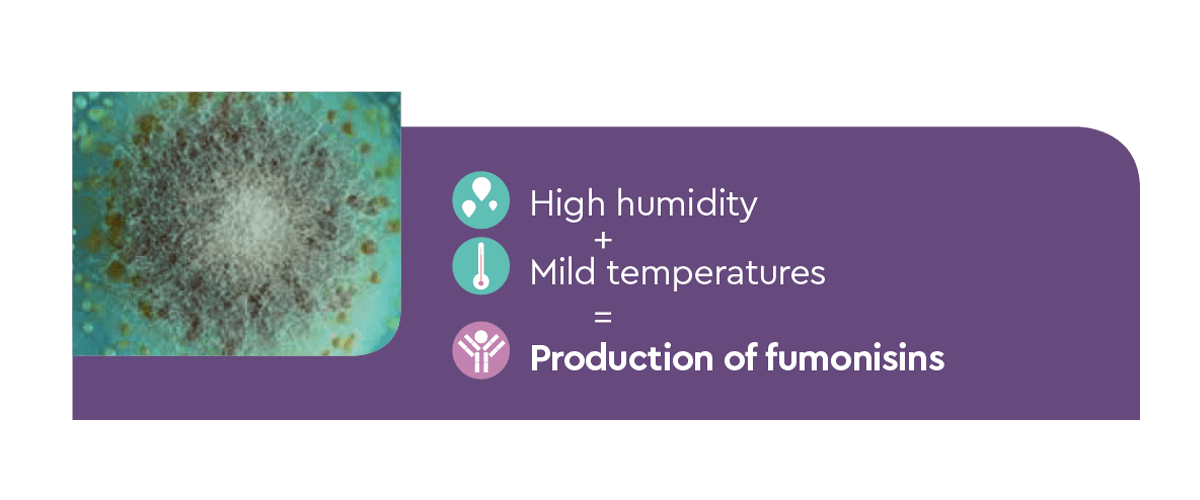
Fusariosis
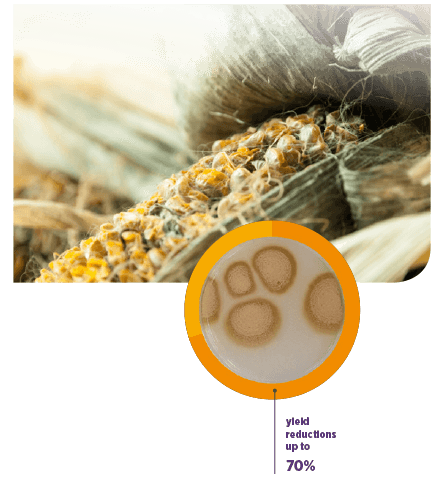
Fungi of Fusarium genus are widespread worldwide and are the cause of economically significant diseases of cultivated and other plants called FUSARIOSIS. It can be found in grains e.g corn, wheat, etc. In wheat, this disease can cause yield reductions of up to 70%.
Corn micotoxinas survey 2018
Fumonisins are found globally in grains and other feed materials. Recent mycotoxins survey conducted by PATENT CO shows that corn harvested around the world in 2018 and 2019 is mostly contaminated with fumonisins. In 2018 fumonisins were present in most of the samples (78%) with a median of 668 ppb and a total of 95% corn samples were contaminated with one or more mycotoxins.
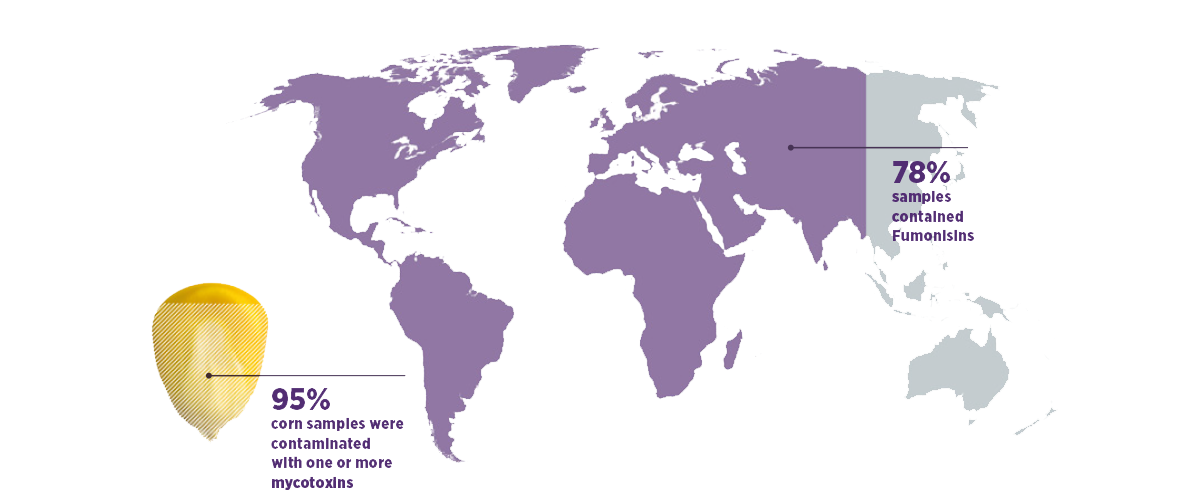
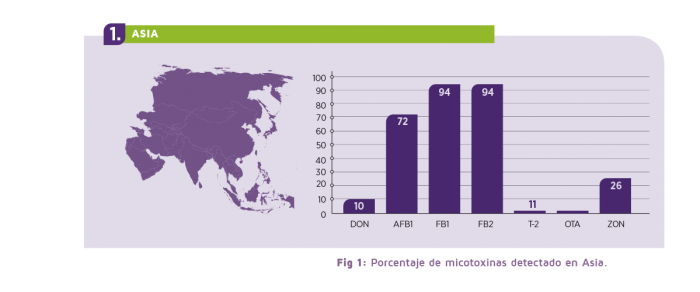
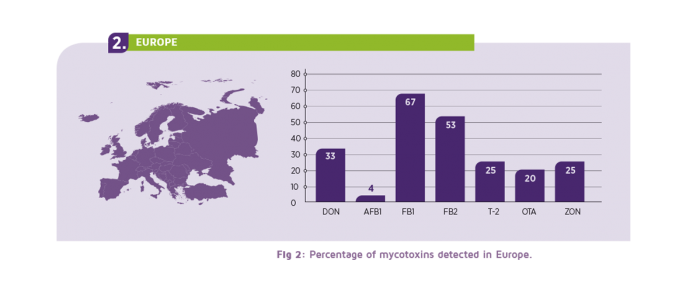
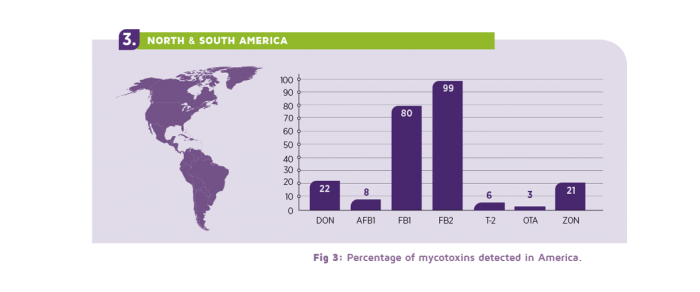
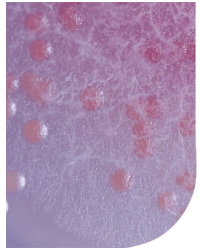







 Micotoxicosis prevention
Micotoxicosis prevention